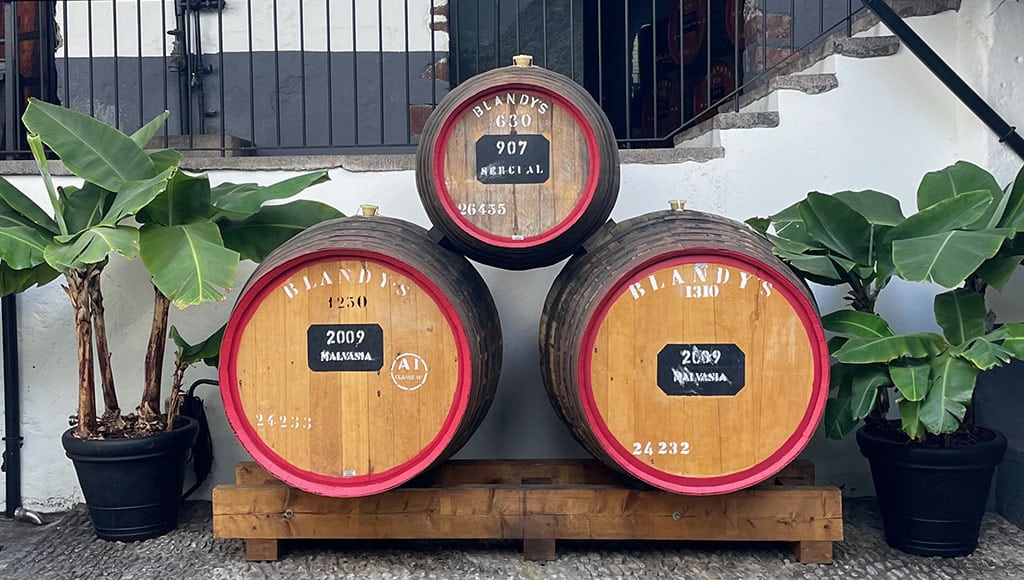Located nearly a thousand kilometres south of Lisbon, the speck of an island in the Atlantic Ocean under the name of Madeira was an important stop for Portuguese navigators to pick up supplies, which often came in the form of barrels of wine.
Legend has it that one such barrel was returned to the producer having made a return voyage to India circa 15th century. The producer immediately noticed the superior quality of the product and decided that it was due to the fact that it had crossed the equator. This has led to arduous efforts of the Madeira wine producers of sending their crops for a sea voyage just to ensure that it comes back as a glorious, sweetly-acidic, caramel liquid that is incredibly luscious to sip. These wines were label as ‘vinho da roda’, which means wines that made the round trip.
Two processes of the ageing
As it turns out, the equator was not the reason for the flavour, but the sun was. Having realised that, the barrels were moved from ships to the attics to ensure maximum heat exposure.
Before they were placed in attics, the wines had to be fortified. Fortification is an important step of the process as it preserves the sweetness of the product by stopping the fermentation of the pressed grape juice, namely the transformation of sugars into alcohol. Hence the sugars that remain keep the wine sweet. In addition, fortification also helps to increase the overall alcohol level of the wine, which inevitably contributes to the roundness and warmth of the tasting sensations.
Historically, French brandy was used for the purpose of fortification. However, with the prohibition of its importation, the wine makers turned to the local products. Now, it is a legal stipulation, especially for the barrels of the noble lineage, for Madeira wine to be fortified only with the brandy of the same grape that is at least 96% alcohol.
The barrels that keep this precious liquid are also of a titled lineage. Made of American oak, they were brought over due to a special trade dispensation granted to Madeira by Britain allowing merchants from Madeira to trade directly with America.

The wine spends at least four years in the barrels in the attic allowing the process of natural heating to concentrate the flavour. There it develops the classical ‘Madeira bouquet’ that is a delicate balance of acidity, and sweetness that is represented by caramel, spices, roasted nuts, dried fruits and others. Each barrel can hold up to 300 – 650 litres losing on average 7% to evaporation. This process is now known as a ‘canteiro’ method of production, and is widely used today especially for the promising vintages.
In addition, producers also deploy estufas to produce the wine. The method is known as ‘estufagem’ and it was invented by local doctor Pantelião Fernandes in 1794 as a consequence of the high market demand of Madeira wines. This method suggests placing the fermented grape juice into a large steel vat (20,000 – 100,000 litres) and heating the vat to 45C during a period of four months. After that, the product is left to age for two years in Brazilian satinwood vats. This process applies only to the Tinta Negra grape. Which begs the question, so which are the grapes used for Madeira wine? Turns out, there are very specific rules there as well.
The grapes
The culture of wine was brought to the island by Infante D. Henrique (Henry, the Navigator) who aimed to develop the wine trade in Portugal. He started with the import of Malvasia which is now one of the grapes used for Madeira wine. There are six varieties in total, each of which delivers a unique flavour profile and gives clues as to what kind of Madeira wine it is.
‘Sercial’ (Esgana Cão)
A white grape usually grown at a 1,000-meter height in the coolest vineyards of the Northern Madeira. Due to the height at which it is grown, sercial ripens with difficulty and makes a dry and acidic wine. With fortification and cask ageing a good sercial is pale, dry, tangy and austere. Serve cellar cool as an aperitif perhaps with olives, smoked salmon or roasted almonds.
‘Verhelho’
A white grape that is a Sercial’s Northern neighbour. It is acidic, but a more mellow, caramel flavoured grape that produces medium-dry to medium-sweet wine. Try it at a cellar cool temperature with hams or pâtés.
‘Bual’ (Boal)
A white grape that is grown in warmer locations, and because of that it reaches higher sugar levels. It is full of raisin and caramel flavours that produce dark and medium-rich wines. Serve at room temperature with a hard cheese, dried fruit, cakes or fruit tart.
‘Malmsley’ (Malvasia)
A white grape that also comes from the warmer, southern locations of the island that produces a rich, sweet wine with a healthy level of acidity found in Madeira wines. Serve at room temperature with rich fruit cake, chocolate or coffee desserts.
‘Tinta Negra (Negra Mol)
A red grape and the most widely planted grape on the island. It can and does make decent Madeira, but its wines rarely have the keeping qualities and style of the above four.
There is also a little bit of Terrantez grown in Madeira to produce wine. There are only 2 hectares on the whole of the island, but it is a white grape that can produce medium dry, well balanced and full bodied drink.
To be continued in the next issue when we will speak of labels, vintages and the culinary versatility of Madeira wine.
By Dr. Irina Mikhailava
|| features@algarveresident.com
Dr. Irina Mikhailava, a chef and a good food champion, happily residing in the Algarve and eating all over the world with an appetite for learning, sharing and writing. Instagram: incompanyoffood




















